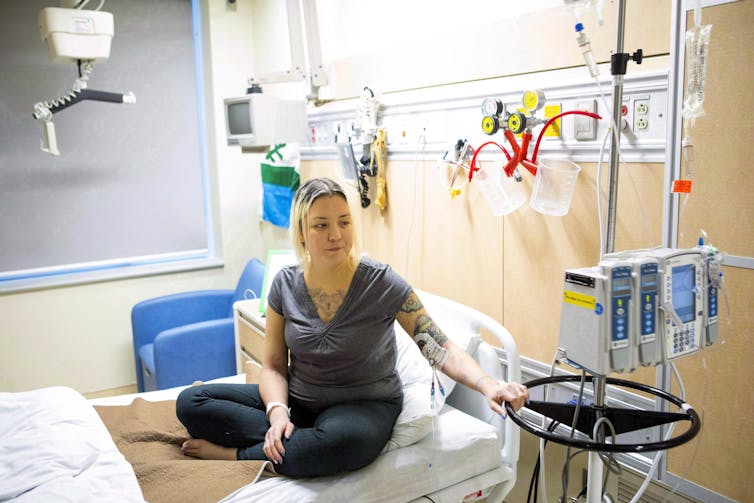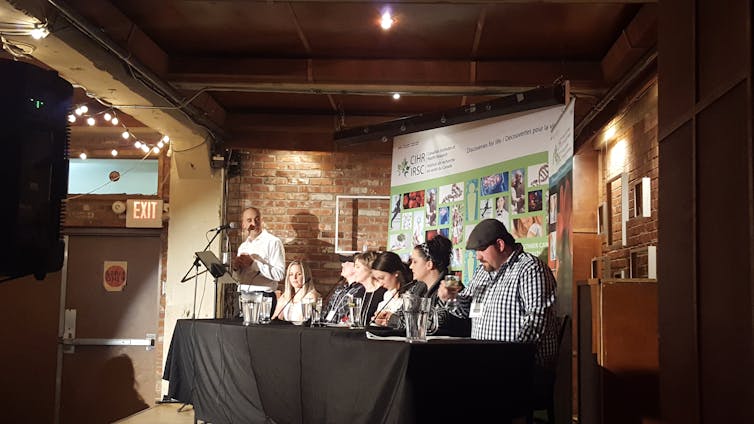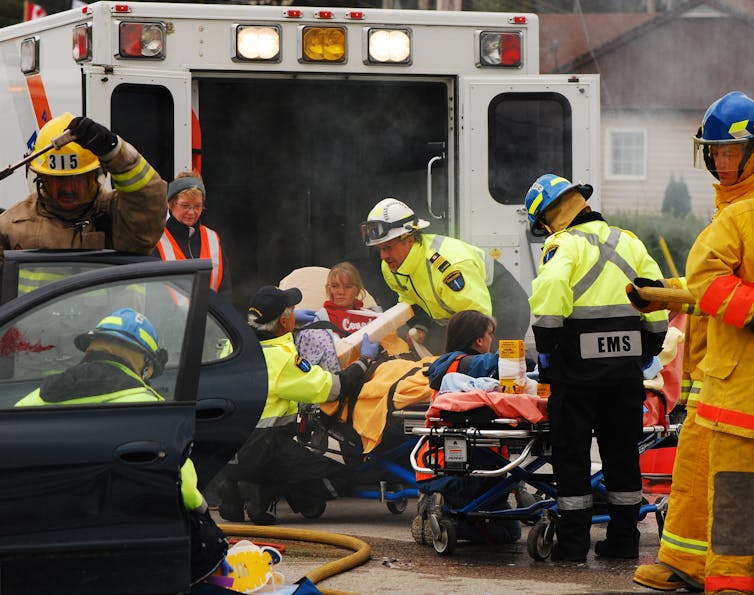“Fighting to stay alive, I did the only thing I could do. I prayed. I couldn’t bear to leave my baby motherless. I opened my eyes one last time to tell my husband I would be OK, and then lost consciousness, not to wake up for weeks.”
Jolissa is a hantavirus survivor. These are viruses that humans acquire through contact with rodent urine, saliva or feces.
Jolissa likely caught the virus when she cleaned out the family trailer in the spring for a camping trip. What began as extreme fatigue that she associated with being a new mom progressed into total exhaustion, nausea and fever. Too weak to hold her baby, Jolissa drove herself to the hospital in Fort Vermillion, Alta.
By the time she was flown to the University of Alberta Hospital in Edmonton with a team of doctors, she was told there was only a 20 per cent chance she would live.
When one of these doctors, Dr. Dave Zygun, heard her share her story at a Café Scientifiqe event in Edmonton, it had a profound impact:
“My heart stopped in reliving this because I have never lost a patient from the helicopter,” he said.
“Hearing this again brought back my own trauma. I didn’t know you, but I knew you were a young mom. I thought about my own family. I didn’t take care of you for long, because in 30 minutes you were up into the ICU. It was a traumatic experience — I will always remember.”
The hospital intensive care unit (ICU) has traditionally been a closed environment, where patient, nurse, doctor and family stories are lost.
As researchers in intensive care, we have found that the sharing of stories brings humanity into the daily business of providing care. It also has the potential to transform health-care policy and delivery.
Rethinking patient-oriented care
Opportunities to share stories about care, in settings away from the hospital, serve to bridge the gap between the experiences of patients and those of doctors and nurses.
The 21st century re-orientation of health care towards patient-centered care — respectful and responsive to individual patient preferences, needs and values — involves listening to, and integrating, patient perspectives.

This is mainly done using survey tools such as Patient Reported Outcome Measures(PROMS) and Patient Reported Experience Measures (PREMS) whose results are collated into reports and distributed to policy-makers and managers.
Rarely are there opportunities for former patients, family members and clinicians to meet face-to-face in public and have candid conversations about how to improve the giving and receiving of hospital care.
A common language
Collective storytelling has been embraced by counsellors and psychologists as therapeutic.
Research suggests that when people share stories they speak a “common language” that helps them to make sense of their situation, particularly when traumatic.
For those who have navigated the challenging world of health care, sharing experiences can help survivors and their families to connect and make meaning.
In critical-care research, we have prioritized community engagement events like Café Scientifique to solicit feedback from patients and families to identify future research priorities.
Café Scientifique, based on the turn-of-the-century “philosopher cafes” in France, are forums for conversation between the public and scientists.
Typically, a panel of scientists presents topical research to a public audience, followed by questions and answers.
Patients as the experts
At our most recent café, the patients and family members were the experts. The audience: Doctors, nurses, health-care administrators and scientists.

For those who attended, the mood was sombre. The patient and family member accounts of their hospital experiences had all the elements of first-rate stories — setting, characters, plot, conflict and heroism.
There were tales of lives on the brink of death and rescues by doctors and nurses using advanced technologies. But for everyone gathered, the real heroes were the patients and family members who bravely shared their experiences.
There were times when it was difficult to listen, moments where empathy was not enough. Yet through the collective sharing, insights emerged about how patient care can be improved.
“What do you need?”
We heard that patients want to be involved in their care (even when critically ill):
“They made me feel like I was part of the process, I didn’t have the knowledge, but every time there was a decision to be made they made me feel involved. In a world of chaos, where I had no control over anything, they made me feel like I had a bit of control. For me that was important.”
We heard that a simple question — “Who/what do you need?” — can drastically enhance an experience:
“I was surrounded by strangers! I was comforted by people I didn’t know — and it was horrible. All I wanted was my brother. If the staff had asked: ‘Who do you want here? Who do you need in this room? Who offers you the most comfort?’ If one simple question was asked, it would have been different.”

Guiding innovation
We heard there is power in collective storytelling. One nurse acknowledged:
“All of your stories are so powerful, we see your stories frequently. I have been through the health-care system as a patient and as a nurse and it is important that we hear your stories so we can improve our care.
"In my 35-year career, I have learned to focus more on the families. There has been a transformation and it will continue based on your stories. I have never thought to ask a family member: ‘Who do you need here?’ That has impacted me.”
If we are to truly place patients at the centre of health care in Canada, we must provide opportunities for patients to share their stories alongside doctors and nurses.
Scientists and policy makers must then use these collective experiences to guide innovations in health-care delivery.
Authors: Christiane Job McIntosh: Acting Assistant Scientific Director Critical Care Strategic Clinical Network, Alberta Health Services and Senior Research Associate, University of Calgary, Sean Bagshaw: Interim Chair, Associate Professor, Research Director - Critical Care, University of Alberta and Tom Stelfox: Professor of Critical Care Medicine, University of Calgary
Credit link: https://theconversation.com/how-patient-stories-can-improve-intensive-care-88210<imgsrc="https://counter.theconversation.com/content/88210/count.gif?distributor=republish-lightbox-advanced" alt="The Conversation" width="1" height="1" />

